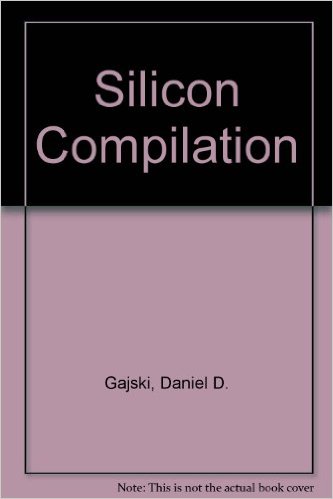Crafting a Comprehensive White Paper: Silicon Compilation with Gajski-Kuhn Design Methodology
Introduction
Silicon compilation is the automated process of transforming a high-level design description into a physical implementation of an integrated circuit (IC). The Gajski-Kuhn design methodology provides a structured approach to this complex task, dividing the design process into multiple abstraction levels. This white paper delves into the key concepts of silicon compilation, the Gajski-Kuhn methodology, and the tools and techniques employed in this process.
Gajski-Kuhn Design Methodology
The Gajski-Kuhn design methodology is a hierarchical approach that divides the design process into five abstraction levels:
- System Level:
- Defines the overall system architecture, including functional specifications, performance requirements, and power constraints.
- System-level languages (SLs) like SystemC are used to model the system behavior.
- Algorithmic Level:
- Describes the algorithms and data structures used to implement the system's functionality.
- Algorithmic languages like C++ or SystemC are used to model the algorithms.
- RTL Level:
- Specifies the hardware design in terms of hardware description languages (HDLs) like Verilog or VHDL.
- This level captures the detailed logic and timing behavior of the design.
- Logic Level:
- Transforms the RTL design into a gate-level netlist, consisting of logic gates and interconnections.
- Logic synthesis tools optimize the gate-level netlist for area, performance, and power.
- Physical Design Level:
- Places and routes the logic gates onto a physical layout, taking into account timing, power, and area constraints.
- Physical design tools generate the final layout, which is used to fabricate the IC.
Silicon Compilation Flow
The silicon compilation flow involves the following steps:
- High-Level Synthesis (HLS):
- Translates the algorithmic-level description into an RTL design.
- HLS tools automate the design process, reducing design time and effort.
- Logic Synthesis:
- Transforms the RTL design into a gate-level netlist.
- Logic synthesis tools optimize the netlist for area, performance, and power.
- Physical Design:
- Places and routes the logic gates onto a physical layout.
- Physical design tools consider timing, power, and area constraints to generate the final layout.
- Verification:
- Verifies the design at each abstraction level to ensure correctness.
- Simulation, formal verification, and static timing analysis are used to identify and fix design errors.
Tools and Techniques
A variety of tools and techniques are used in the silicon compilation process:
- HLS Tools: Synopsys Vitis HLS, Xilinx Vivado HLS
- Logic Synthesis Tools: Synopsys Design Compiler, Cadence Genus
- Physical Design Tools: Synopsys IC Compiler, Cadence Innovus
- Verification Tools: Cadence Xcelium, Synopsys VCS, Mentor Questa
Challenges and Future Trends
- Design Complexity: As ICs become more complex, design challenges increase.
- Power Consumption: Power efficiency is a critical concern, especially for mobile devices.
- Timing Closure: Meeting timing constraints is a major challenge in physical design.
Future trends in silicon compilation include:
- Advanced Node Technologies: Designing for smaller and faster transistors.
- 3D ICs: Stacking multiple layers of chips to increase density and performance.
- AI-Driven Design Automation: Using AI and machine learning to automate design tasks.
Conclusion
Silicon compilation is a complex but essential process in the design of integrated circuits. The Gajski-Kuhn design methodology provides a structured approach to this process, enabling the design of sophisticated ICs. By understanding the key concepts, tools, and techniques involved in silicon compilation, engineers can effectively design and implement complex systems.
References
- Gajski, D. D., & Kuhn, R. H. (1983). New VLSI design methodology. IEEE Transactions on Computer-Aided Design of Integrated Circuits and Systems, 2(3), 294-302.
- Synopsys: https://www.cadence.com/en_US/home.html
- Mentor, A Siemens Business:
Would you like to delve deeper into a specific aspect of silicon compilation, such as HLS, logic synthesis, or physical design?



